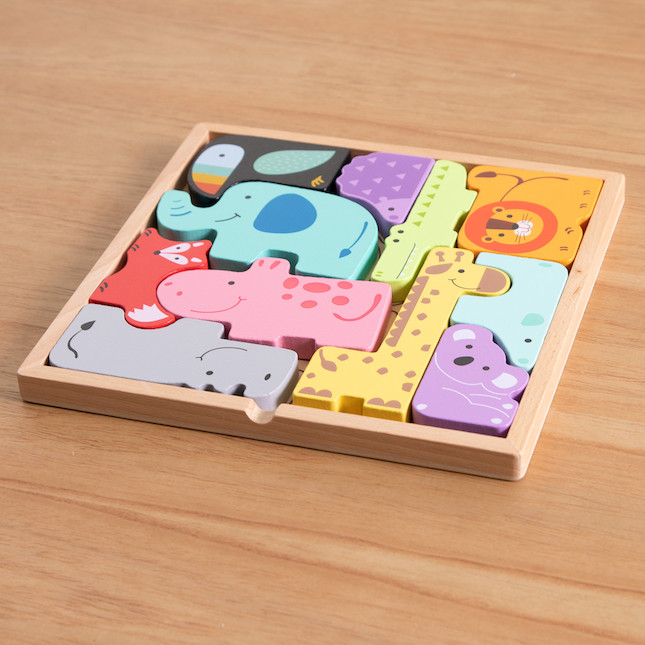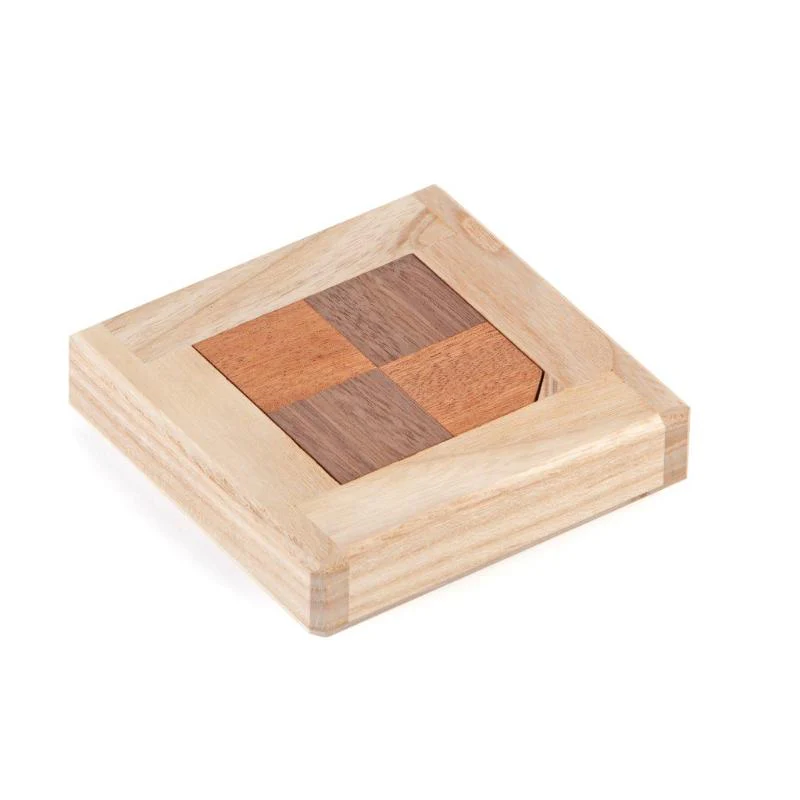The History of Block Puzzles
Block puzzles have a rich history that dates back to the early 20th century. They began as simple, hand-carved toys, often made from wood. Over time, their popularity soared due to their educational value and recreational appeal. The allure of block puzzles lies in their ability to captivate both children and adults alike, offering endless possibilities for challenge and creativity.

The earliest block puzzle served as tools for teaching spatial awareness and problem-solving skills. They were also used to entertain and occupy young minds, often doubling as early developmental toys. As manufacturing processes advanced, companies began producing block puzzles on a larger scale, introducing them to a wider audience.
However, it was with the advent of the digital era that block puzzles truly transformed. Video games and mobile apps ushered in a new age of digital block puzzle games, which brought the classic pastime to screens worldwide. This shift led to a resurgence in their popularity, combining traditional puzzle-solving tactics with modern technology.
Today, block puzzles continue to evolve, with innovative designs and variations appearing regularly. From immersive 3D puzzle to competitive puzzle-solving games, block puzzles have established themselves as a timeless form of entertainment and learning. They honor their humble beginnings while looking towards a future filled with even more exciting developments in the world of puzzles.
Types of Block Puzzles
Over the years, block puzzles have diversified into various types, each offering a unique set of challenges and engaging different skills.
Classic Wooden Block Puzzles
Classic wooden block puzzles are the traditional form we all remember with fondness. Their simplicity lies in fitting hand-carved pieces into a wooden tray. Even today, they hold educational value for teaching shape recognition and spatial relations to children.
Jigsaw Block Puzzles
Jigsaw block puzzles demand the piecing together of uniquely shaped pieces to form a complete picture. They range from simple designs for beginners to complex patterns that challenge even seasoned puzzle enthusiasts.
3D Block Puzzles
3D block puzzles take the challenge up a notch. They require the construction of three-dimensional objects, testing spatial reasoning and visualization skills even further. These puzzles can be quite a tactile experience, often resulting in impressive structures.
Digital Block Puzzle Games
Digital block puzzle games have brought the classic pastime into the palms of our hands. These games blend traditional puzzle-solving with the convenience of modern technology, offering new twists and interactive elements that keep the genre fresh and exciting. Players can now enjoy block puzzles virtually anywhere, anytime.

Essential Strategies for Solving Block Puzzles
To excel in the world of block puzzles, certain strategies are crucial. These are techniques honed by puzzle masters over time, aiding in solving puzzles effectively.
Analyzing Shapes and Spaces
Success in block puzzles often hinges on your ability to examine and deconstruct the shapes and spaces within a puzzle. Look at the empty space as a clue. Match it with pieces that resemble this shape. It’s like finding the right key for a lock. This strategy simplifies complex puzzles, making them more manageable.
The Importance of Corner Pieces
Corner pieces serve as the framework. They are the starting point for many puzzles, especially jigsaw block puzzles. Identifying these pieces first provides a foundation to build upon and helps to visualize the larger picture.
Utilizing Patterns
Block puzzles may seem random, but they often follow patterns. Recognize these patterns to predict piece placement. This can greatly speed up the solving process, as finding a repeating sequence is like deciphering a code.
Strategic Piece Placement
Once you’ve identified the right piece, think ahead before placing it. Consider how it will affect adjacent spaces and future moves. Strategic placement is the difference between a haphazard approach and a smooth path to solving the puzzle. Every move should pave the way for the next, creating a domino effect towards completion.
Tips for Improving Your Block Puzzle Skills
Improving at block puzzles doesn’t just mean knowing strategies. It takes practice and the right mindset.
Practice Regularly
The key to mastery in block puzzles, as with many skills, is regular practice. Set aside time each day to engage with different puzzle types. This will sharpen your spatial recognition and problem-solving abilities. Try to mix up the puzzle genres to keep your skills versatile.
Learn from Mistakes
Every mistake is a chance to learn. Pay attention when a piece doesn’t fit or a strategy fails. Think about why it happened and how you can avoid it next time. Reflecting on errors helps you understand the puzzle’s logic better.
Challenge Yourself with Increasing Difficulty
Don’t stay in your comfort zone for too long. Gradually increase the complexity of puzzles you attempt. Start with simple wooden block puzzles and work up to more intricate 3D or digital puzzles. This will push your skills further and make solving easier puzzles quicker.
Use Online Resources and Communities
Tap into the vast resources available online. Watch tutorials, join forums, and follow block puzzle communities. Learn from the experiences of others and try techniques they suggest. You might find new strategies that work well for you and help in tackling more difficult puzzles.
The Cognitive Benefits of Block Puzzles
Block puzzles do more than entertain; they’re a brain workout, boosting cognitive abilities.
Enhancing Spatial Reasoning
Spatial reasoning gets a major lift from block puzzles. As players fit pieces together, they visualize shapes in their minds. This sharpens the ability to understand how different parts fit in space. Regular puzzle solving trains the brain, much like a muscle, to spot spatial patterns quickly and with precision.
Improving Problem-Solving Skills
Block puzzle are a fun way to improve problem-solving. Each puzzle is a new problem waiting for a solution. Players learn to use logic and deductive reasoning to navigate complex challenges. By experimenting with different pieces and approaches, they devise and revise strategies, learning to solve problems in creative and efficient ways.

Memory Strengthening Through Repetition
Repetition is key to memory improvement, and block puzzle offer this through consistent practice. The process of remembering piece locations and possible combinations can enhance both short and long-term memory. Over time, players recall strategies and solutions faster, leading to quicker and more successful puzzle completions.
The Role of Block Puzzles in Education
Block puzzle play a crucial role in educational settings. They’re tools for learning and development, especially for children. These puzzles are not only for fun. They help young learners gain important skills and knowledge. Teachers and parents often use them to support early education in multiple ways.
Developing Fine Motor Skills in Young Learners
Block puzzle are fantastic for kids’ fine motor skills. Handling the small pieces requires control and precision. Kids pick up, rotate, and place blocks, practicing hand-eye coordination. This action strengthens small muscles in their hands and fingers. It prepares them for writing and other daily tasks.
Integrating Puzzles Into STEM Learning
STEM education benefits from block puzzles too. They’re perfect for teaching science, technology, engineering, and math concepts. Puzzles make abstract ideas tangible. Kids learn about shapes, symmetry, and balance. They experiment and explore, which is what STEM is all about. As they solve puzzles, they apply critical thinking and logic. These skills are core to STEM learning and success in future studies.
Advanced Techniques for Block Puzzle Enthusiasts
For those who love block puzzle, there’s always room to grow. Advanced techniques can sharpen your skills and bring new excitement to your puzzle-solving experiences.
Speed Solving
Speed solving is thrilling. It’s about finishing puzzle fast. To excel, you need to practice a lot. Recognize patterns quickly. Also, train your fingers to move swiftly. Try timing yourself and aim to beat your records. Speed solving adds a racing element that makes block puzzles even more engaging.
Competitive Puzzle Solving
Competitive puzzle solving pits you against others. Here, strategy meets speed. Learn from competitors and adapt. It’s important to stay calm under pressure. Also, sharpen your skills through practice sessions. Competitions can help you push your limits and discover new strategies.
Creating Custom Block Puzzles
Creating custom puzzles brings a creative twist. Design your own block puzzles to challenge yourself and others. Use design software or draw them by hand. Keep balance in mind. Make sure your puzzle are solvable. Testing and tweaking are key. Making custom puzzles also hones your puzzle-solving strategies by putting you in the creator’s shoes.
